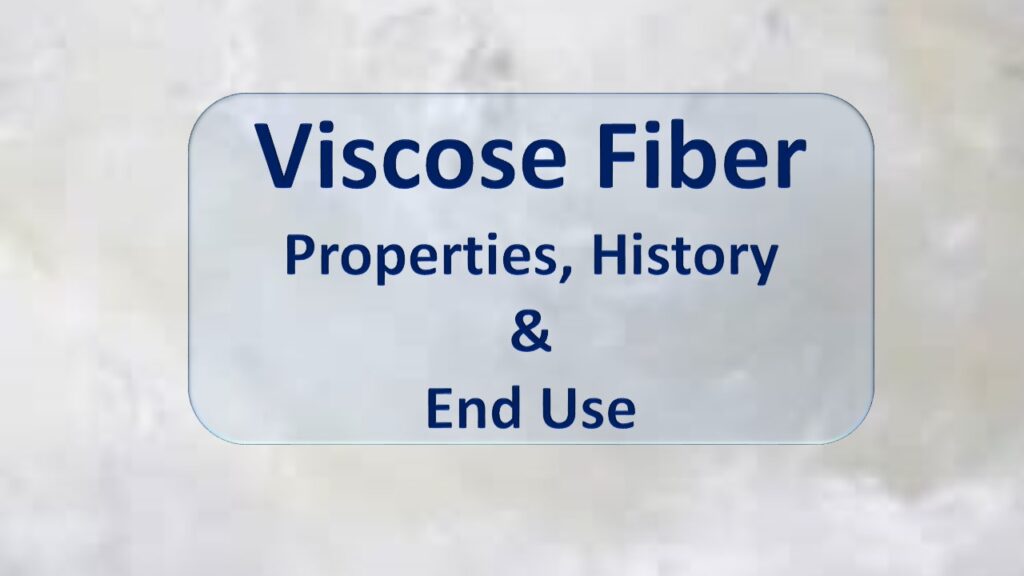
Viscose Fiber Properties and History. Viscose, also known as rayon, derives from natural materials, primarily wood pulp or cotton fibers, in the creation of this semi-synthetic fiber. The process of making viscose involves several steps:
Viscose Fiber Properties and History
- Cellulose Extraction: Chemicals like caustic soda (sodium hydroxide) treat the raw material, often wood pulp from trees or cotton, breaking it down into cellulose.
- Aging: A solution of caustic soda further breaks down the cellulose during its aging process. This creates a thick, viscous solution, hence the name “viscose.”
- Pressing or Shredding: They press the viscose solution through spinnerets or shred it to create filaments.
- Chemical Bath: These filaments are soaked in a bath of sulfuric acid or another acidic solution. This process solidifies the filaments and turns them into a solid form.
- Washing and Bleaching: They wash the solidified filaments to eliminate any lingering chemicals and impurities. Additionally, they might bleach them to attain the desired color or whiteness.
- Spinning and Drying: They spin the cleaned filaments into yarn and subsequently dry them, resulting in the final viscose fibers.
Viscose has properties similar to those of natural fibers like cotton or silk, making it comfortable to wear. It’s used in clothing, upholstery, and various other textiles due to its versatility and affordability. However, its production involves chemicals and processes that can have environmental impacts if not managed properly. People are actively working on developing more sustainable methods for producing viscose fibers.
Viscose Fiber History
Viscose, often known as rayon, has an intriguing history that dates back to the late 19th century:
- Discovery: Scientists in the early 1800s discovered that they could dissolve cellulose, a compound found in plant cell walls, in chemicals and then regenerate it into fibers. This discovery laid the foundation for the creation of artificial fibers.
- Development: In the 1880s, French chemist Hilaire de Chardonnet invented the first artificial textile fiber, known as “Chardonnet silk” or “artificial silk.” It was produced from cellulose extracted from mulberry tree bark and processed using chemicals.
- Viscose Invention: However, it was British scientists Charles Cross, Edward Bevan, and Clayton Beadle who patented the viscose process in 1892. Treating cellulose with sodium hydroxide and carbon disulfide produced a viscous solution, which people then spun into fibers.
- Commercialization: Courtaulds, a British company, commercialized the viscose process in the early 20th century. It rapidly gained popularity due to its versatility, affordability, and the ability to imitate natural fibers like silk, cotton, and linen.
- Popularity and Growth: Throughout the early to mid-1900s, viscose became a widely used material in the textile industry. Its popularity surged due to its use in clothing, household textiles, and industrial applications.
- Technological Advances: Over time, advancements in manufacturing techniques and chemical processes improved the quality of viscose and expanded its applications. Developers created variations like high-wet-modulus rayon and other types to improve particular properties.
- Environmental Concerns: While viscose offered numerous advantages, its production involves the use of various chemicals, which can have environmental impacts if not managed properly. Issues such as pollution from chemical processing and deforestation for wood pulp sourcing raised concerns about the sustainability of viscose production.
FAQs About Viscose Fiber
Certainly! Here are some frequently asked questions (FAQs) about viscose fiber:
What is viscose fiber?
Viscose, also known as rayon, is a semi-synthetic fiber made from natural materials, primarily wood pulp derived from bamboo, beechwood, or other plant sources. It’s known for its softness, smoothness, and versatility in various textile applications.
What are the characteristics of viscose fiber?
- Softness: Viscose fibers are soft to the touch, often compared to silk or cotton.
- Breathability: They are highly breathable and comfortable to wear in warm weather.
- Absorbency: Viscose has good moisture-wicking properties, making it suitable for clothing and textiles.
- Drape and Luster: Viscose fabrics have a smooth drape and a subtle sheen, lending elegance to garments.
What are the common uses of viscose fiber?
- Clothing: Viscose fibers are used in various clothing items such as dresses, blouses, shirts, skirts, and linings.
- Home Textiles: They are also used in bedding, curtains, upholstery, and towels due to their softness and drape.
- Industrial Applications: Viscose fibers find application in non-woven materials like sanitary products and wipes.
How is viscose fiber produced?
Viscose fiber production involves chemically treating wood pulp or plant cellulose with chemicals such as caustic soda and carbon disulfide to create a viscous solution. This solution is extruded through spinnerets to form fibers, which are then treated and washed to remove chemicals and solidified into yarns.
Is viscose fiber eco-friendly?
Viscose is derived from natural materials, but the production process involves chemicals that can be harmful to the environment if not managed properly. However, newer technologies and more responsible manufacturing practices aim to minimize the environmental impact of viscose production.
How does viscose fiber compare to cotton?
Viscose is often considered similar to cotton in terms of softness and breathability. However, viscose tends to have better drape and a silkier feel than cotton. It’s also less prone to wrinkling compared to cotton.
Is viscose fiber biodegradable?
Yes, viscose fibers are biodegradable as they are derived from plant sources.
How should viscose garments be cared for?
Viscose garments are usually machine washable, but it’s important to follow the care instructions provided on the garment’s label for specific washing and drying guidelines to maintain their quality.
Can viscose fiber be blended with other fibers?
Yes, viscose can be blended with various fibers such as cotton, polyester, or wool to enhance specific properties like durability, softness, or moisture-wicking abilities.
These FAQs provide an overview of viscose fiber, its characteristics, production process, uses, and eco-friendliness, offering insights into its applications in the textile industry.
Contact Us for sale and purchase of Viscose.